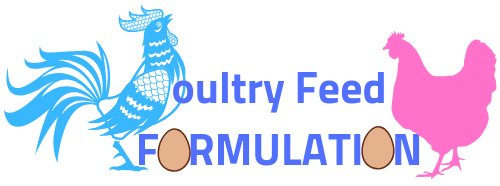Poultry feed formulation can be regarded both as an art as well as a science. For successful and accurate poultry feed formulation, you need good knowledge of the poultry feed ingredients, a little bit of innovation as well as patience.
A good poultry feed formulation should include information on the amount of each of the ingredients that should be added to the poultry diet. There should also be information on the concentration of the various ingredients used in the poultry feed formulations.

The composition of the nutrients used in the poultry feed formulation will show whether the poultry feed is adequate for the class of chicken it is to be used on. Layers require a certain nutrient composition and the case is the same with broilers. The formulation of chicks will be different from that of growers or birds that are at the point of lay.
A lot of the poultry feed formulations will also show the amount of energy in the poultry feeds. This is shown here in terms of the metabolisable energy. Formulated poultry feeds will also show the amount of proteins used in the poultry feed as well as complete information on the minerals and the digestible amino acids used in the poultry diet.

Typical digestible amino acids used in the poultry feed formulations will include methionine, a limiting amino acid as well as various essential amino acids. There are a host of poultry feed formulation databases available that contain information on the various digestible amino acid contents in the various poultry feed ingredients that you can use in your poultry feed formulations.
The Process of Poultry Feed Formulations
Poultry feed formulation is also called least cost formulation because you have to mix the right ingredients with the nutrient requirements in the most economical manner. To do this successfully, you need to have an in depth grasp of a number of factors such as the nutrient requirements of a certain class of poultry, the nutrient components of the ingredients used in the poultry feeds, prices of the ingredients as well as the digestibility values of the ingredients you are using to formulate the poultry feeds.

Using this knowledge, you can apply a feeds formulation mathematical formula in order to derive the various ingredients that need to be included in the poultry feeds. This information also includes the proportion in which these ingredients need to be added the poultry feed. Of course in a large mill, the whole process is computerised and might not be challenging like in the case of someone trying to mix the feeds in their backyards.
The formula for mixing the ingredients is generally simpler if you are only using a few ingredients. But if you using a lot of ingredients, it gets a lot more complex. You can also purchase the various feed formulation packages that are available in the market currently for the various classes of poultry.
Large feed mills may have the resources to produce more precise poultry feeds. For example, they can create small amounts of test diets that can be tested in laboratories to ensure it meets the right quality standards before it is produced en masse. The tests generally determine if the poultry feed has the right chemical composition required for the class of poultry that it will be used on.
But with the right knowledge of poultry feed formulation, you can still mill poultry feeds in your backyard without constructing mammoth poultry feed mills.
Related posts:



Miami Dolphins: T Branden Albert (ankle, illness), C Mike Pouncey (hip), G Anthony Steen (ankle) The Dolphins’ disappointing offensive line remains banged-up.
Cheap Baseball Jerseys [url=http://www.mlbcheapjerseys.us.com/]Cheap Baseball Jerseys[/url]